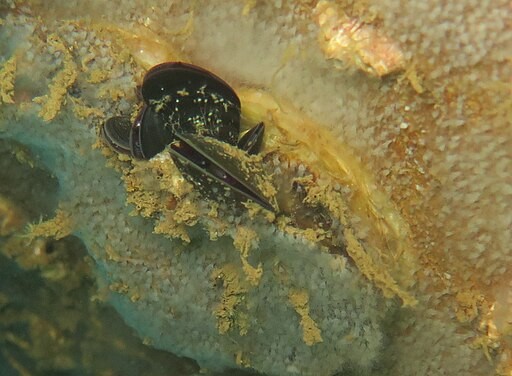Cellulose nanofibers are considered a promising resource for various industrial sectors. However, their impact on the marine environment is not well known. A new study recently addressed this issue by conducting a study on mussels.

(Photo : Wikimedia Commons/ Vasilis Andreou)
What are Cellulose Nanofibers?
Cellulose nanofiber (CNF) refers to a new type of natural nanoscale fiber which is purely made from cellulose molecules. Technically, it is a cheap, light-weight, thermally stable organic compound which meets the standards of sustainable chemistry. Compared with natural fibers like glass and carbon fibers, these fibers have demonstrated remarkable mechanical properties.
CNF typically measures 3 nanometers in diameter and micron-scale length, showing both crystalline and amorphous sections. They are developed by mechanical fibrillation, which includes homogenization, microfluidization, or ultrafine grinding of cellulose biomass. In some cases, pretreatments are conducted on cellulose nanofiber to improve its quality, reduce energy input, or achieve other purposes.
Experts have shown growing interest in sustainable applications of cellulose nanofiber such in packaging, paper and paint production, cosmetics and in construction and automotive industries. This material is also used in reinforcing polymers which is used in bio-based building materials.
In the medical sector, CNF is utilized in wound healing, tissue engineering, medical implants, and delivery of bioactive molecules. In food industries, cellulose nanofibers are used as low calorie replacements for carbohydrate additives.
READ ALSO: Scientists Develop Environmental Friendly Nanocellulose-Based Styrofoam
Sentinels of Sea Health
The growing application of nanocellulose in multiple sectors requires a safety assessment and ecotoxicity. For this reason, a group of experts conducted a study presented in the paper "Environmental safety of nanocellulose: an acute in vivo study with marine mussels Mytilus galloprovincialis."
The work was made possible through the collaboration of research groups OSCMLab from the "G. Natta" Department of Chemistry, Materials and Chemical Engineering at the Polytechnic University of Milan and EcoBiomLab from the Department of Physical, Earth and Environmental Sciences at the University of Siena. Professor Montserrat Solè from the Institute of Marine Sciences in Barcelona also contributed to the study.
In this research, the investigators examined two types of cellulose nanofibers: oxidized and non-oxidized. They were assessed in terms of their ecotoxicological impact on Mediterranean mussels (Mytilus galloprovincialis) as well as their safety for the marine environment.
The findings of this study suggest that cellulose nanofibers can impact the immune response of mussels and change the functionality of their gills through physical interactions such as surface adhesion. However, the study did not find any toxicity such as to endanger the survival of the species. The team did not also observe stressful conditions that are capable of altering its response to environmental changes.
The experiments also ruled out potential changes in the pH and salinity of seawater after the release of nanofibers. Additionally, they mimicked realistic exposure scenarios like transport with sewage effluents in coastal marine areas.
According to Professor Ilaria Corsi, the new study raises basic questions regarding the interaction between marine biodiversity and cellulose nanofibers. It stimulates the need for further research to conduct an ecological risk assessment which takes into account chronic exposure times and multiple stress conditions. Moreover, it opens the door to a responsible use of cellulose nanofiber which has growing interest in various fields.
RELATED ARTICLE: ECG Patch Made From Nanocellulose Developed by Scientists As Solution to Plastic Waste in Healthcare Industry
Check out more news and information on Nanocellulose in Science Times.














